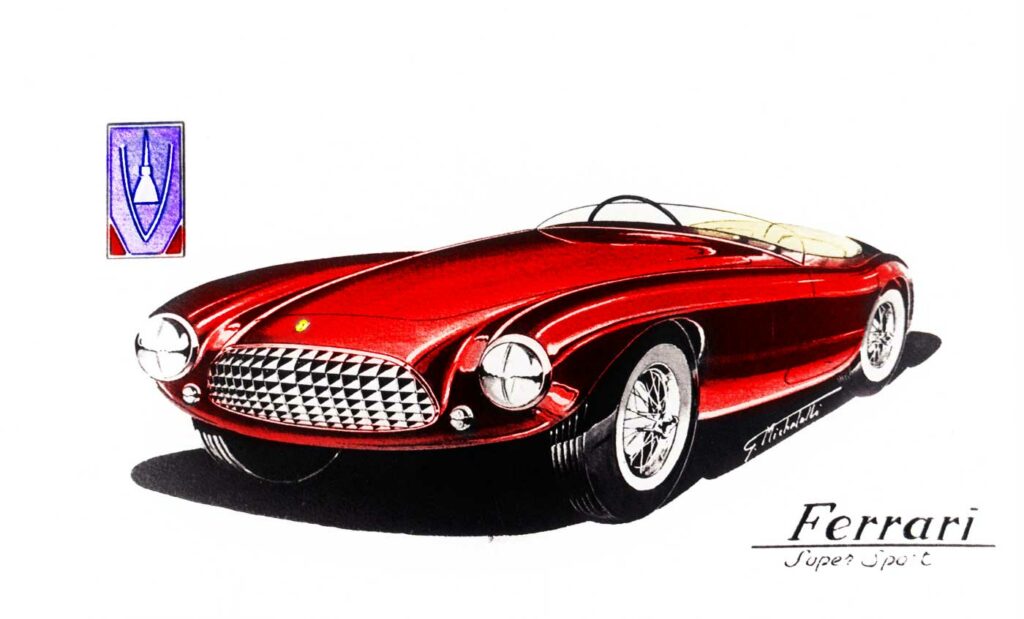
Like Vignale, Enzo Ferrari had founded his small factory based in Maranello in 1946 and had come into contact with the Turin coachbuilder through Franco Cornacchia, well-known owner of Scuderia Guastalla and trustee of the Cavallino brand in Milan. The two manufacturers were united by some peculiar personal characteristics, which saw them both excel in the exasperated dedication to their work.
The agreement between them was reached when Ferrari entrusted its chassis to the milanese coachbuilder Touring, which in fact contributed significantly to creating the famous image of the Italian racing 12 cylinders in the 1950s. But the manufacturer from Maranello, allergic to long-term commitments (till the collaboration with Pinin Farina), was looking not for a new coachbuilder, but for an authentic artist.
The first result of the “dreamteam” partnership between Ferrari and Vignale was the Ferrari Berlinetta 166 MM (chassis no 0062 M) built in 1950 on behalf of Cornacchia, a model that originated from the famous Vignale-Michelotti duo, which gave birth of a large number of cars that have fairly entered the history of the Italian automobile.
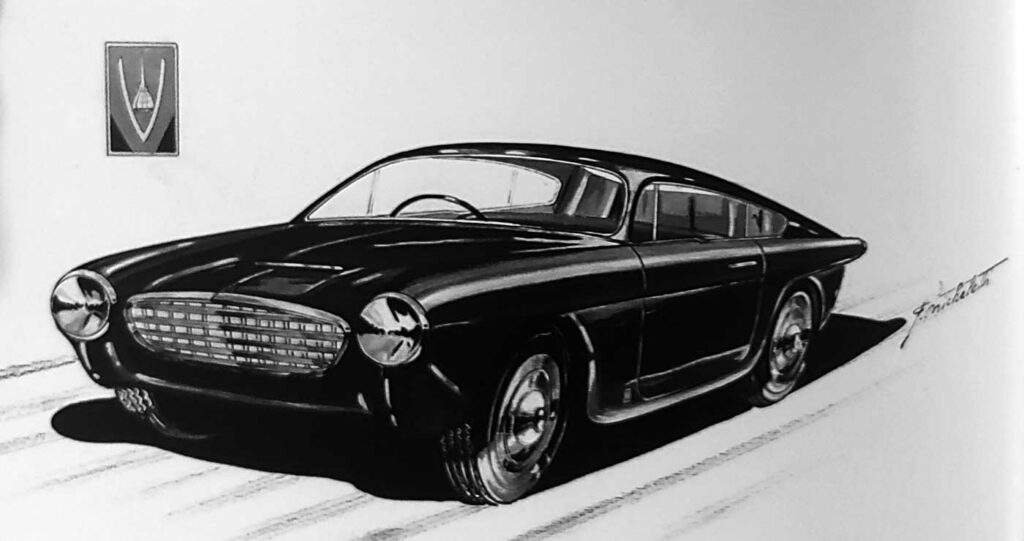
It was a moment of great euphoria between the two, which was consolidated in a short time: in case the sketch presented by Giovanni Michelotti was not as expected, the versatile inspiration of Vignale, intervened with consummate experience to give a simpler and sometimes less transgressive shape. The Ferraris designed by Michelotti and built by Vignale (fewer than 160 specimens) turned out to be little or much different from each other, but all identified by those spontaneous shapes which were evolved in the later years into a “familiy feeling” look.
Among the exceptionally elegant models created in the early 1950s was the Ferrari 212 Export Spider (0090 E), a splendid interpretation by Carrozzeria Vignale on the famous two-seater barchetta theme, which debuted at the 1951 Geneva Motor Show and was delivered on 12 March to Umberto Marzotto. In that car Vignale best expressed the Italian style school, with a long prominent bonnet, slightly modeled sides, a barely hinted windshield and the almost absolute absence of chrome decorations, aimed to enhance the beauty of the shapes.
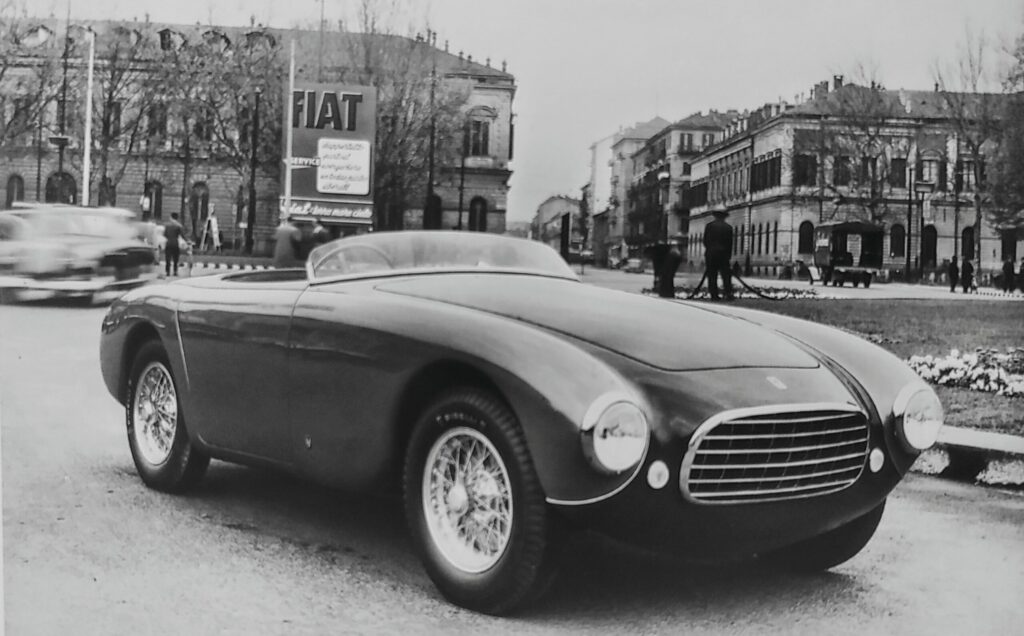
The pleased relationship that arose in those years between Michelotti and Vignale took shape in other splendid cars, sculpted as rare objects of art and which found eminent admirers in some characters of the European nobility, as well as famous sportsmen and entertainers.
Among the other extraordinary speciments of Maranello cars dressed by Vignale were the 195 Inter (chassis no. 095S) exhibited at the 1951 Turin Motor Show; the 212 Export (chassis no 0111 ES), built in 1951; the beautiful yellow 340 America spider (chassis no. 0140 A) ordered by Luigi Chinetti – Ferrari importer in New York – which had numerous owners in the USA ever since; the 225 S (chassis no 0154 ED) with which Vittorio Marzotto won the 1952 Montecarlo Grand Prix; the 212 Export coupé (chassis no 0170 ET) of 1952, engaged that year in the Mille Miglia, in the Trieste-Opicina, in the Aosta-Gran San Bernardo, in the Vittorio Veneto-Cansiglio, class winner in the Italian championship of the category.
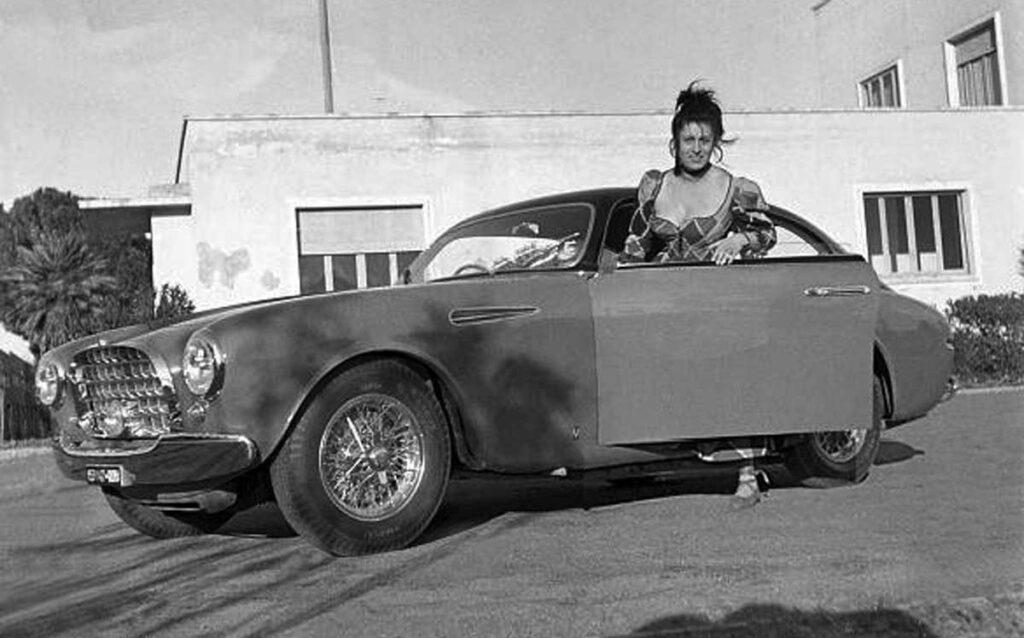
To these were added the Ferrari 195 Inter (chassis no 0181 EL), originally owned by the actress Anna Magnani; the spider 125 S (chassis no. 182 ED), with which Paolo Marzotto won the Coppa d’Oro delle Dolomiti, the Giro delle Calabrie and the Senigallia Circuit in 1952; the very elegant 212 Inter coupé (chassis no 0211 EL) for Gianni Agnelli; the amazing 340 Mexico coupé (chassis no 0226 AT), which competed in November 1952 with drivers Ascari-Scotuzzi at the Carrera Panamericana; the 250 MM (chassis no. 0260 MM), delivered in March 1953 to Luigi Chinetti on behalf of a Californian customer; the 375 America (chassis no. 327 AL), exhibited at the Geneva and New York Motor Shows in 1954.
In 1953 Carrozzeria Vignale bodied six Ferrari 166, ten 250 MM and five 340 MM chassis with barchetta bodywork, showing the overwhelming success that those light cars enjoyed among customers with clear sporting vocations. The last Ferrari with Vignale bodywork was in 1968: the 330 GT 2+2 (no.7963) at the request of Luigi Chinetti for the US market, a sort of extravagant station wagon with an enormous overhang on the rear axle, exhibited at the Turin Motor Show.
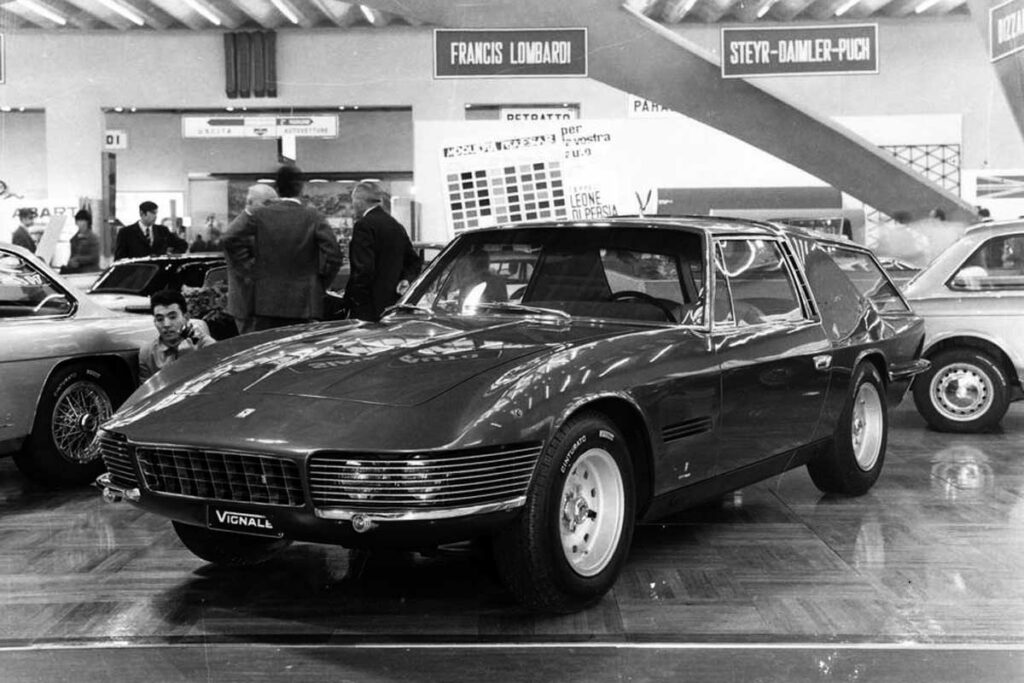
The Vignale Ferrari’s plated a decisive role in the competitions in which the Maranello brand took part, for example the 212 Inter of the Carrera Panamerica 1951 and the 212 Export, 250 S and 340 Mexico which competed successfully in the 1952-53 editions of that race, as well as the cars triumphed at the Mille Miglia in the three-year period 1951-53; in the successful 1953 sports season Vignale exhibited the reinterpretation of the famous MM racing berlinetta on the chassis of the Ferrari 166, 250 and 340. This latest version triumphed in the debut race at the Giro di Sicilia with the Villoresi-Cassani crew and, two weeks later, it won the Mille Miglia with Giannino Marzotto-Crosara, a race valid for the new world championship for sports cars. The two-liter 166 MM barchetta built by Vignale participated that year with Sterzi-Pirovano in the Giro di Sicilia, in the Mille Miglia (Sterzi-Rossi) and in August at the 12 Hours of Pescara.

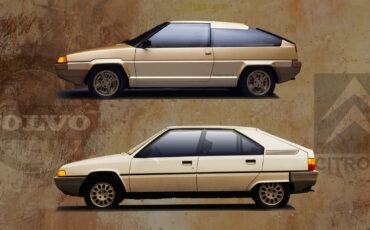
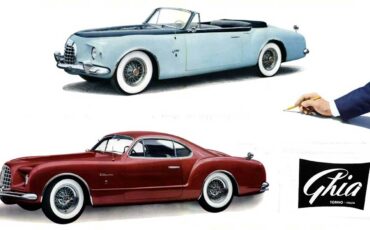
Ferrari owes a lot to Michelotti (and Vignale)
the automotive history owes a lot to Michelotti
The 166 in the design sketch looks like a Fiat 1100 Vignale